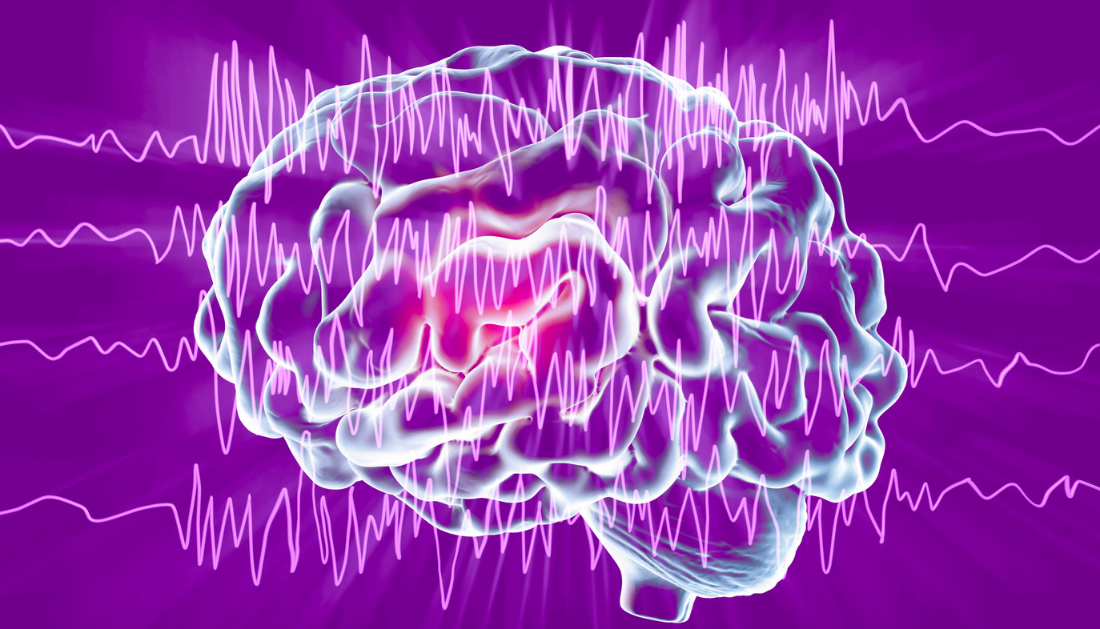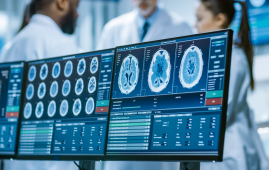

Predicting Seizures in Alzheimer’s with Brain Rhythms
Researchers at UCLA Health have made a breakthrough in predicting seizure risk in Alzheimer’s disease patients. A new study, published in Brain Communications, reveals that changes in brain rhythms — specifically high-frequency oscillations (HFOs)—could serve as early indicators of seizure activity in Alzheimer’s. This development builds on previous pioneering work by Dr. Keith Vossel, who first identified silent seizures as a key factor accelerating cognitive decline in Alzheimer’s patients.
Understanding High-Frequency Oscillations (HFOs)
HFOs are rapid bursts of electrical activity in the brain, traditionally linked to epilepsy. While these oscillations have been widely studied in epilepsy, this study marks the first examination of HFOs in neurodegenerative diseases like Alzheimer’s. Researchers found that Alzheimer’s patients exhibit HFOs at rates two to three times higher than cognitively healthy individuals, with the signals showing up more prominently on the right side of the brain.
Detection Methods: MEG vs. EEG
The UCLA team used two advanced neuroimaging techniques—magnetoencephalography (MEG) and electroencephalography (EEG)—to detect HFOs. MEG, which offers superior signal-to-noise properties, was found to be more effective than EEG in identifying these rhythmic signals. This discovery provides a fast, non-invasive way to detect epileptic activity in Alzheimer’s patients, which has traditionally been difficult to assess.
Levetiracetam and Seizure Control
In a pivotal finding, the study showed that HFOs coinciding with epileptic spikes were suppressed by the antiseizure medication levetiracetam, as demonstrated in a Phase IIa clinical trial led by Dr. Vossel. This suggests that monitoring HFOs could not only help identify patients at risk for seizures but also inform treatment decisions. The rapid MEG screening method, taking just 10 minutes, could become a critical tool in early intervention.
Impact on Alzheimer’s Care
This research offers the potential for improved patient outcomes by identifying those at higher risk of seizures. By detecting epileptic activity early, healthcare providers can offer timely treatments, such as low-dose levetiracetam, which has shown promise in improving memory and problem-solving abilities in Alzheimer’s patients. This could reduce healthcare costs while enhancing patient care.
Conclusion: A New Era of Alzheimer’s Seizure Management
The study opens the door for earlier, more precise interventions for Alzheimer’s patients at risk of seizures. By focusing on HFOs as a biomarker, the research offers hope for better management of the disease, improving both quality of life and cognitive function in those affected.
More Information: M C Vishnu Shandilya et al, High frequency oscillations in epileptic and non-epileptic Alzheimer’s disease patients and the differential effect of levetiracetam on the oscillations, Brain Communications (2025). DOI: 10.1093/braincomms/fcaf041. academic.oup.com/braincomms/ar … /7/1/fcaf041/8009393
more recommended stories
 Engineered Herpes Virus for Glioblastoma Immunotherapy
Engineered Herpes Virus for Glioblastoma ImmunotherapyA Powerful New Direction in Glioblastoma.
 Poor Kidney Function and Alzheimer’s Biomarkers Explained
Poor Kidney Function and Alzheimer’s Biomarkers ExplainedPoor kidney function may influence levels.
 Coffee and Cognitive Function: Evidence Review
Coffee and Cognitive Function: Evidence ReviewA new narrative review in Cureus.
 How Hormones Shape Dopamine-Driven Learning
How Hormones Shape Dopamine-Driven LearningNYU Study on Hormones and Cognitive.
 Personalized Pain Care Transforms Parkinson’s Treatment
Personalized Pain Care Transforms Parkinson’s TreatmentNew UniSA research underscores the urgent.
 Blood test shows promise for faster ALS diagnosis
Blood test shows promise for faster ALS diagnosisSummary / Key Points A UCLA.
 Selective Attention Is Exclusively Cortical in Humans
Selective Attention Is Exclusively Cortical in HumansSelective Attention: New Insights from the.
 Action Video Games and Brain Health: Study Insights
Action Video Games and Brain Health: Study InsightsGaming and Brain Structure: What MRI.
 Conversational Brain Encoding Revealed in New Study
Conversational Brain Encoding Revealed in New StudyConversational Brain Encoding Revealed in New.
 Neuroscientists Map the Brain’s Speech & Language Pathways
Neuroscientists Map the Brain’s Speech & Language PathwaysA groundbreaking study has revealed how.

Leave a Comment